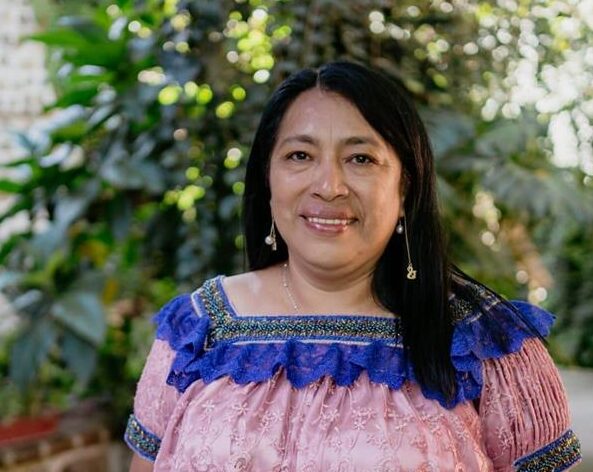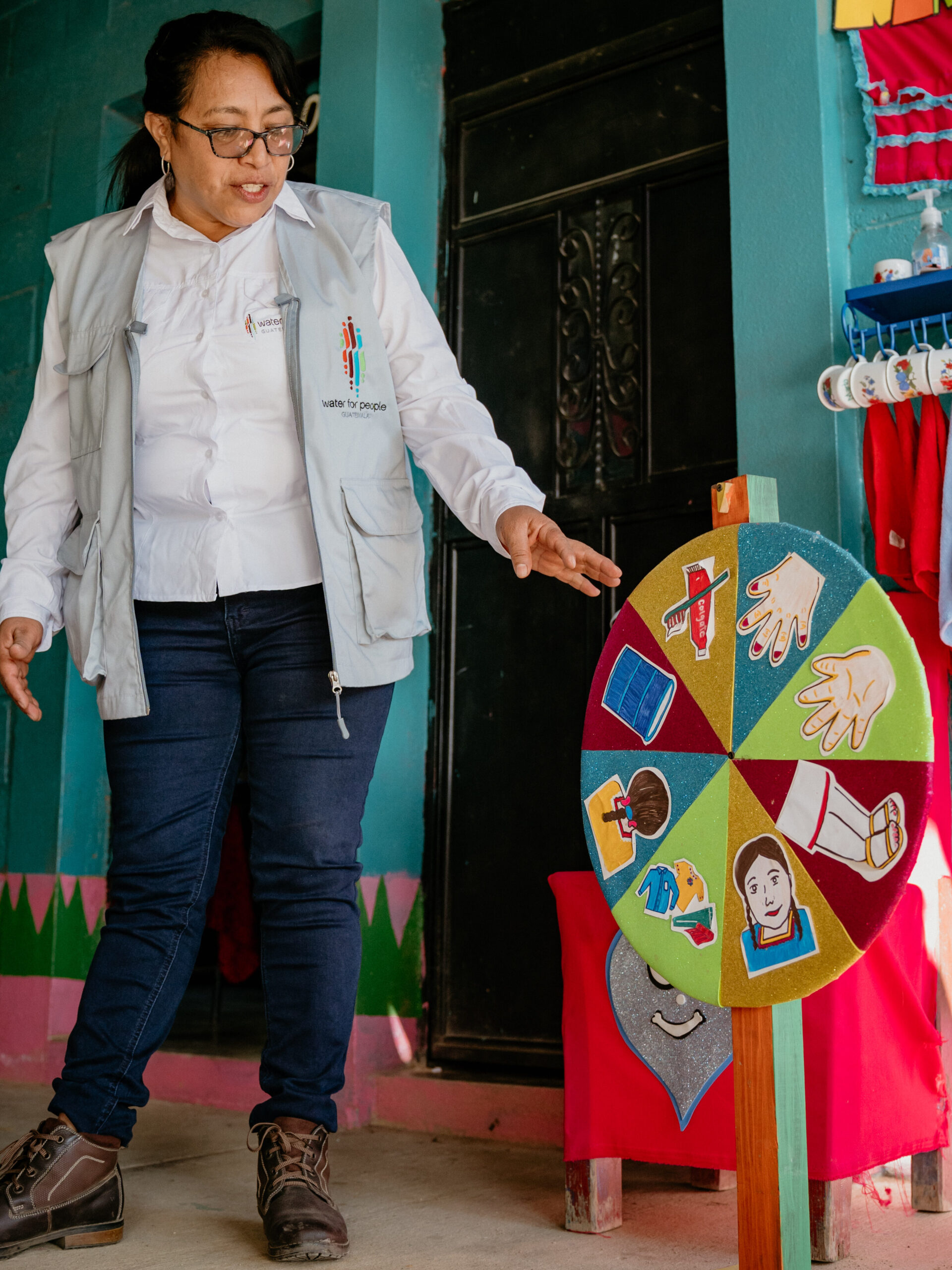
Nestled at 6,600 feet above sea level in Guatemala’s western highlands, Santa Cruz del Quiché serves as the home base for Water For People Guatemala. Since 2008, Aura Cúc has been a Health and Hygiene Education Officer, promoting healthy habits in schools and communities. She is a proud Maya Kaqchikel woman and a trained nurse specializing in primary care and intercultural health.
In a conversation with Aura, we dove into the deep connection between WASH and education – including what it truly means to create change from within. What follows is a powerful reminder of the role that dignity and access to water, sanitation, and hygiene play in education and human development.
Q: You’ve worked closely with schools and communities over the years. What impact have you seen when hygiene education is prioritized at schools?
Aura: Hygiene education is fundamental in people’s lives. Training in hygiene habits protects the health of students and teachers. It fosters a culture of self-care that extends to families and communities, turning students into agents of change. Students feel safe and more comfortable when they have clean and dignified bathrooms, access to safe drinking water, and appropriate handwashing spaces. This contributes to reduced absenteeism caused by gastrointestinal illnesses and taboos surrounding menstrual periods. When schools promote hygiene education, they enhance learning and educational quality, as children are not ill or preoccupied with the lack of basic facilities to meet their physiological needs.
The changes we see at schools are profound. In one school I visited, children used to leave school during class or recess to use the bathroom at their homes because there were no facilities available at school. That meant students missed out on learning and time they could have spent with their peers. To stay, some students would go behind the school to relieve themselves. The situation changed when on-site water and sanitation facilities became a reality. The change was massive – children would even arrive earlier because they were excited to use the facilities. A teacher told me that "the school’s bathroom is better than the one they have at home," which speaks volumes. These improvements foster not only better health but also better learning.
Q: How do you facilitate the adoption of new hygiene habits among communities and students?

Aura: Changing long-held habits is one of our most significant challenges. People often believe myths, like that chlorine in water causes cancer or hair loss. These ideas are passed down through generations. So, we work gently and respectfully with the communities using practical tools and examples. In one school, only 10% of students initially washed their hands with soap. After consistent education and engagement, that number rose to 80%. That’s a real, measurable change.
Engaging kids requires creativity – we do that through songs, storytelling, and "hygiene corners" in classrooms. There, children spin a "health wheel" to choose their hygiene habit of the day – like nail care or handwashing. If they follow through, they get stars or smiley faces, and the "Health Student of the Month" is recognized. It creates excitement and ownership. We also make toothbrush holders and hygiene kits using recycled materials so schools can sustain these efforts independently.
Q: Regarding sustainability, how do you ensure all this work lasts after the initial project ends?
Aura: Sustainability is built from the start. Our model is based on a three-way investment: the community provides local materials and labor, the municipality covers skilled labor, and Water For People supplies the rest. We also train teachers, parents, and students in hygiene and maintenance. Schools receive manuals, toolkits, and training on how to handle minor repairs. We also use biodigesters for wastewater treatment, which are low-maintenance and long-lasting. In addition, we work with the Ministry of Education; when everyone understands their role, the system thrives.
Teachers also play a central role in sustainability efforts. If they adopt and model hygiene, the students will follow. When working with a new school, I often visit them. However, I can’t do so daily. It’s the teachers who are a constant presence for children at school. That’s why we invest heavily in training and equipping them with knowledge, confidence, and tools, so they can lead by example. In many cases, the transformation starts with them.
Q: Can you share an example of a school that has significantly improved thanks to hygiene education efforts?
Aura: One of our most significant achievements in Guatemala is that the four municipalities where we work have reached full water and sanitation coverage. All four communities have water systems in place in health clinics and at schools. I am proud of our work, especially the SWASH+ (water, sanitation, and hygiene in schools) program. This work combines infrastructure like toilets for girls and boys, a separate one for adolescent girls, handwashing stations, and greywater treatment with education. We created a comprehensive hygiene education program for teachers, students, and families. Classrooms are fully equipped, and students actively participate in playful routines. When children feel dignified at school, everything changes – from attendance to confidence. And when teachers and communities lead the way, those changes last.
Aura’s work is a testament to how investing in water, sanitation, and hygiene infrastructure, alongside education, can go a long way, creating ripples of dignity, empowerment, and a better future for all.

